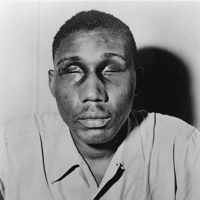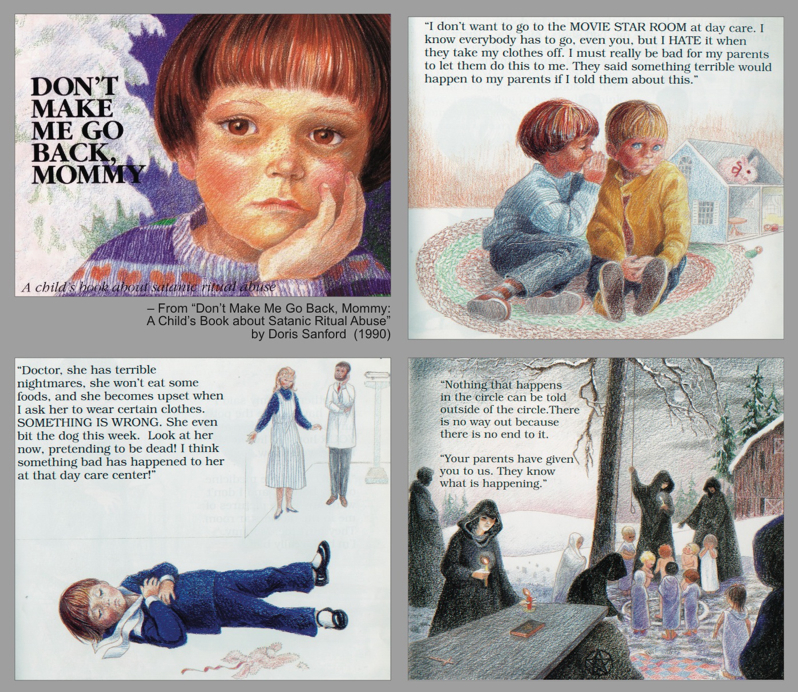Rascals case in brief
In the beginning, in 1989, more than 90 children at the Little Rascals Day Care Center in Edenton, North Carolina, accused a total of 20 adults with 429 instances of sexual abuse over a three-year period. It may have all begun with one parent’s complaint about punishment given her child.
Among the alleged perpetrators: the sheriff and mayor. But prosecutors would charge only Robin Byrum, Darlene Harris, Elizabeth “Betsy” Kelly, Robert “Bob” Kelly, Willard Scott Privott, Shelley Stone and Dawn Wilson – the Edenton 7.
Along with sodomy and beatings, allegations included a baby killed with a handgun, a child being hung upside down from a tree and being set on fire and countless other fantastic incidents involving spaceships, hot air balloons, pirate ships and trained sharks.
By the time prosecutors dropped the last charges in 1997, Little Rascals had become North Carolina’s longest and most costly criminal trial. Prosecutors kept defendants jailed in hopes at least one would turn against their supposed co-conspirators. Remarkably, none did. Another shameful record: Five defendants had to wait longer to face their accusers in court than anyone else in North Carolina history.
Between 1991 and 1997, Ofra Bikel produced three extraordinary episodes on the Little Rascals case for the PBS series “Frontline.” Although “Innocence Lost” did not deter prosecutors, it exposed their tactics and fostered nationwide skepticism and dismay.
With each passing year, the absurdity of the Little Rascals charges has become more obvious. But no admission of error has ever come from prosecutors, police, interviewers or parents. This site is devoted to the issues raised by this case.
On Facebook
Click for earlier Facebook posts archived on this site
Click to go to
Today’s random selection from the Little Rascals Day Care archives….
Click for earlier Facebook posts archived on this site
Click to go to
Today’s random selection from the Little Rascals Day Care archives….
Edenton anything but eager to make amends for Little Rascals

Post & Courier
Woodard
Feb. 11, 2019
“Such stories aren’t proudly passed down from one generation to the next. Unlike some small Southern towns,
which often ignore the troublesome elements of their past, Batesburg-Leesville (the two towns merged in 1993) has embraced [Isaac] Woodard’s tragedy and tried to make amends….”
– From “A cop gouged out a black vet’s eyes. 73 years later, the SC town confronts it”
by Brian Hicks in the Charleston Post & Courier (Feb. 7)
If ever there was a small Southern town committed to ignoring the “troublesome elements” of its past, it is Edenton, North Carolina. Not a hint of the Little Rascals Day Care case – surely the most significant news event of 20th century Edenton – mars the civic memory.
![]()
A children’s book not appropriate for children

Nov. 5, 2012
“When five-year-old Allison’s parents begin to see a change in her behavior at home, they seek professional help for her. They find that Allison and other children have been ritually abused at a day care center. Thus begins Allison’s recovery….”
– From “Don’t Make Me Go Back, Mommy: A Child’s Book about Satanic Ritual Abuse” by Doris Sanford (1990)
Who knows how many lucky youngsters found this colorfully illustrated hardback under the Christmas tree? (More than 7,000 copies made it into print.)
Although Sanford credits herself with “months of intensive research into the nature and practice of satanic ritual abuse,” her dedication to “Patti Hills, Survivor…. We honor you, Patti! ” suggests she relied heavily on a Portland, Oregon, therapist “who claims to be… a witness to human sacrifice” (Willamette Week, Oct. 22, 1997). Also consulting: Lauren Stratford, author of the discredited baby-breeder memoir “Satan’s Underground.”
In 1993, “Don’t Make Me Go Back, Mommy” helped advance a notorious ritual-abuse case against a Spring Valley, Calif., child-care volunteer. The mother of one of Dale Akiki’s supposed victims admitted under cross-examination that she had read the book to her daughter, and it likely made the rounds of other parents. (After more than two years behind bars and a seven-month trial, Akiki was found not guilty of all charges.)
Eventually, however, “Don’t Make Me Go Back, Mommy” would become a target of appropriate (and sometimes hilarious) ridicule.
‘Subculture’ of therapists blamed ritual abuse
 Jan. 16, 2013
Jan. 16, 2013
“Therapists diagnosing Satanic Ritual Abuse as the cause of their patients’ troubles… often belonged to a subculture within the therapeutic community, where focus on dissociation and multiple personalities were more important than among other clinicians.
“This small minority were involved in the vast majority of ritual abuse allegations with a therapy background. Nevertheless, many elements of the ideas, and some of the practices that seem to have been important in creating SRA-narratives were common among therapists of all kinds: belief in the concept of repression, a view of memory as analogous to a video-tape or computer and (confidence) that hypnosis could be an important tool in unearthing forgotten abuse. This view of memory and memory recovery has been largely dismissed among the community of cognitive psychologists.”
– From “Psychology and the Satanic Ritual Abuse Controversy. A Brief Research Review” by Asbjørn Dyrendal in Skepsis (March 2, 2007)
Anxieties about children still make us crazy
Aug. 16, 2013
“Ritual abuse may now seem an almost quaint aberration, a temporary fad that seized the popular imagination, as outdated as hula-hoops or disco fever. But our anxieties about children continue to affect our judgment. When a meta-analysis of research published in Psychological Bulletin (1998) suggested that not all children under the age of 18 were traumatized by having sexual experiences before adulthood, the U.S. House of Representatives passed a resolution condemning the association. Not surprisingly, the popular outcry that led to the Congressional resolution was sparked by talk show celebrity Laura Schlessinger.
“More recently, a book that explored whether overzealous response to fears about children and sexuality are harmful to the youth we seek to protect was published by the University of Minnesota press after trade publishers deemed it too controversial for their lists; Tim Pawlenty, then a state legislator, but who was elected governor of Minnesota in 2002, quickly moved to condemn the publication and the University for publishing it.”
– From “The Devil in the Details: Media Representation of ‘Ritual Abuse’ and Evaluation of Sources” by Barbara Fister in Studies in Media & Information Literacy Education (May 2003)











0 CommentsComment on Facebook